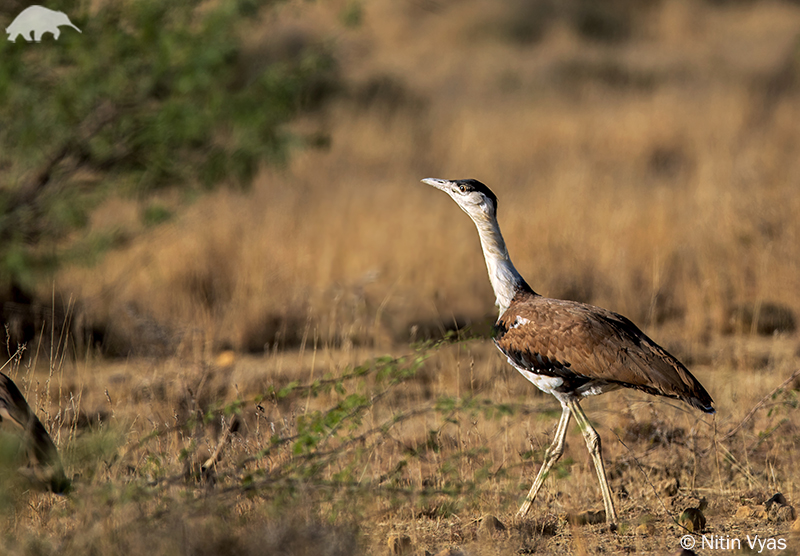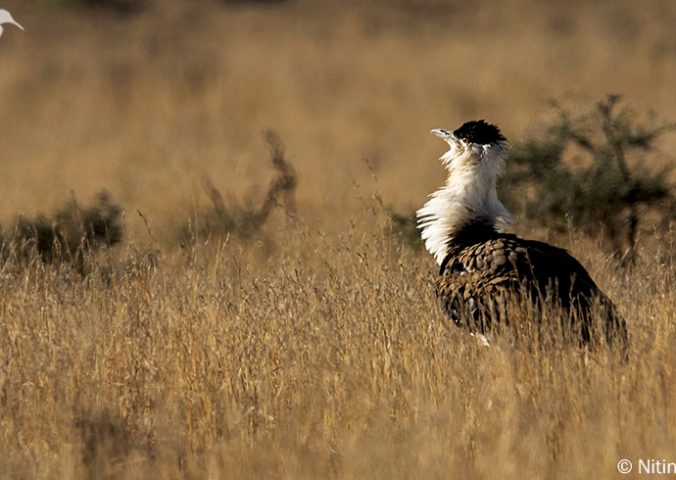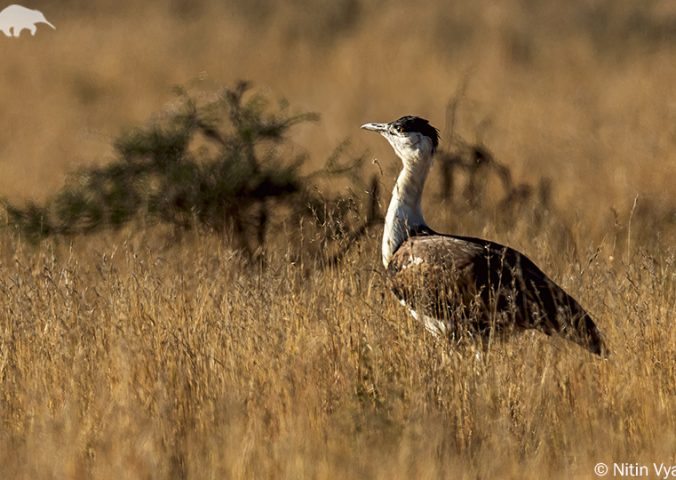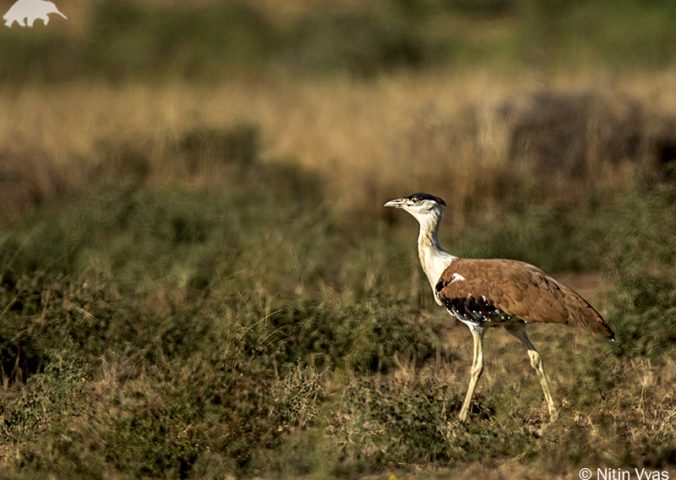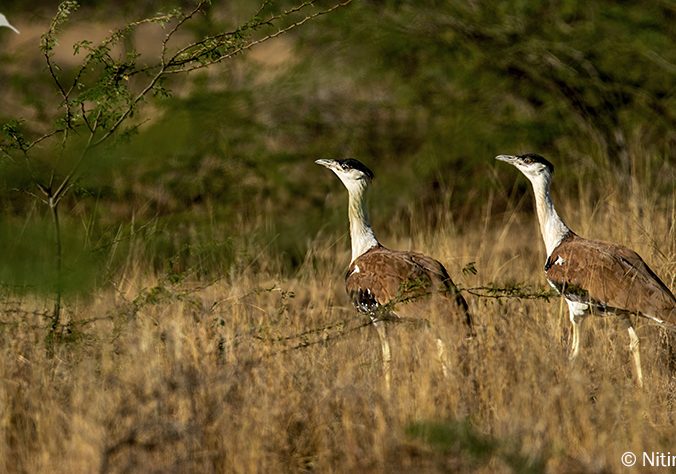About
The great Indian Bustard is one of the heaviest flying birds on the planet
As its name suggests it is found in India, and is the largest bird within this range; with males standing at well over a metre in height. In the breeding season between March and September, males take part in territorial fights, involving strutting next to each other, and leaping against each other with the aim to land on the opponents head with their neck. Periodically males also produce a booming call that can be heard for almost 500m. They were formerly found across the Indian Subcontinent, but they are now locally extinct in 90% of its original range. Hunting is still a major issue in some parts of its range. Today the small population of <300 is threatened primarily by habitat degradation and loss. This is driven by agricultural and infrastructure expansion, mining, and also poor habitat management. Only with focused and immediate conservation action can this critically endangered species begin to recover.
- Order: Otidiformes
- Family: Otididae
- Population: <300
- Trend: decreasing
- Size: 92-122 cm
- Weight: Unspecified
EDGE Score
Distribution
Found scattered throughout the Indian states of Rajasthan, Gurjarat, Maharashtra, Andhra Pradesh, Karnataka and Madhya Pradesh.
Habitat and Ecology
They inhabit dry and semi-dry grasslands with dispersed bushes and patches of scrub. Breeding tends to occur in undisturbed or less degraded grassland sites. Bustards come together to breed in groups during the monsoon season. Nests are found on the ground, with clutches being laid once a year and typically consisting of only one egg. They are omnivores, feeding on insects, grass seeds, berries, rodents and reptiles.
